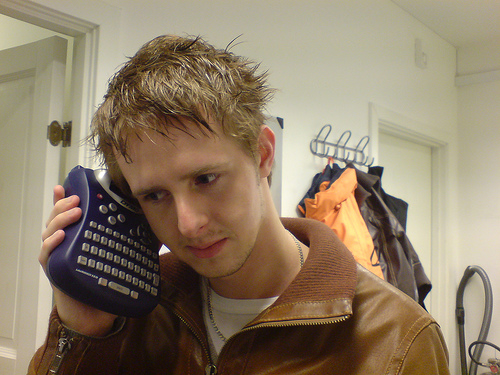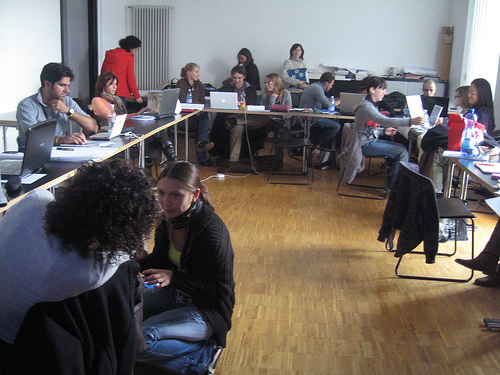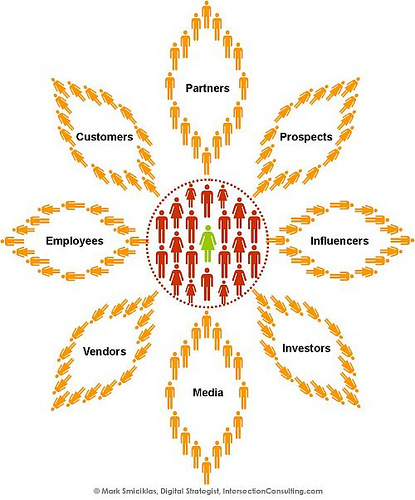By Rachel Botsman
In 2005, Brad Neuberg was a thirty-one-year-old freelance open source software programmer living in San Francisco. He had just left a tech start-up to work for himself. Neuberg enjoyed working from home, yet the experience was also isolating. He tried the de facto techie office, a coffee shop, but found it too noisy and distracting and devoid of meaningful interactions. Despite his complaints about the monotony and conformity of the nine-to-five cube-working culture, Neuberg discovered that he missed the social camaraderie of an office. To his surprise, water cooler conversations served a purpose. “It seemed I could either have a job that would give me structure and community,” he recalls, “or I could be freelance and have freedom and independence. Why couldn’t I have both?”
Neuberg had been inventing collaborative software systems since 1998, including a Web software named Open Portal and a distributed Web browser named Paper Airplane. He started thinking about the key ingredients that made these platforms work so well—community,creativity, and structure—and how he could apply these elements to his current working dilemma. He wondered, “How could I have the kind of community and the cool people around me that I would have at a place like Google without having to join a big company?”
 He rallied three fellow techies who had also been talking about the solitary tensions of working independently. They rented a space called the Spiral Muse for two days a week in the Mission and set up a few folding tables, wireless Internet, and a printer and created a basic meeting space. Neuberg had no idea he was starting what would become a global movement he coined “coworking.” After the friends hosted a coworking Meetup, word spread of the concept. Soon other free-agent techies, researchers, writers, filmmakers, and entrepreneurs began dropping in wanting pay-as-you go usage of the space for a few hours or a few days. All these people were working for themselves and had sworn never to return to a traditional office and the politics that go with it, but they also yearned for some form of working community where they could cross-pollinate ideas face-to-face. As Stephen Humphrey, a professor of management at Florida State University’s business school, who spent more than forty years researching social interaction at work and telecommuting, says, “We suddenly start to realize, we miss socializing—and we need it.” Eventually Neuberg left the Spiral Muse group and, ironically, took a job at Google, but with some of the original participants, including Chris Messina and Tara Hunt, he went on to start another successful coworking space called the Hat Factory. Today, coworking “offices” are being set up across America (Sandbox Suites, Citizen Space), and the phenomenon is rapidly spreading around the world “I urged people to steal the idea,” Neuberg says.
He rallied three fellow techies who had also been talking about the solitary tensions of working independently. They rented a space called the Spiral Muse for two days a week in the Mission and set up a few folding tables, wireless Internet, and a printer and created a basic meeting space. Neuberg had no idea he was starting what would become a global movement he coined “coworking.” After the friends hosted a coworking Meetup, word spread of the concept. Soon other free-agent techies, researchers, writers, filmmakers, and entrepreneurs began dropping in wanting pay-as-you go usage of the space for a few hours or a few days. All these people were working for themselves and had sworn never to return to a traditional office and the politics that go with it, but they also yearned for some form of working community where they could cross-pollinate ideas face-to-face. As Stephen Humphrey, a professor of management at Florida State University’s business school, who spent more than forty years researching social interaction at work and telecommuting, says, “We suddenly start to realize, we miss socializing—and we need it.” Eventually Neuberg left the Spiral Muse group and, ironically, took a job at Google, but with some of the original participants, including Chris Messina and Tara Hunt, he went on to start another successful coworking space called the Hat Factory. Today, coworking “offices” are being set up across America (Sandbox Suites, Citizen Space), and the phenomenon is rapidly spreading around the world “I urged people to steal the idea,” Neuberg says.
The growth of this movement is not surprising, given that it’s estimated that one-fifth of the workforce, or 30 million people, are working on their own in some form or another in the United States alone. And many of these people, including Stan Stalnaker (who as part of Hub Culture runs a collection of coworking pavilions around the world), are, as Stalnaker puts it, “global, heavily wired, eco-conscious and cost-cutting workers who were looking for a hip yet conscientious temporary coworking environment in their home cities as well as on the road.”
Coworkers describe what their shared workspaces mean to them not in pragmatic terms but with emotional expressions such as “hubs of interactions” or “fraternities of mutual interests.” The spaces themselves vary in terms of perks and culture, but they are all based on combining the best elements of a coffee shop (social, energetic, creative) and the best elements of a workspace (productive, functional). As Dominique Cardon and Christoph Aguiton, French social science researchers on communications and cooperation, say, coworking creates a “third place.” “Something which is neither a desk in a company nor the domicile of the person; it is a kind of public place you can join when you want, with the guarantee of finding some social life and the chance of a useful exchange.”
Co-working is one of hundreds of innovative examples that are part of a new culture and economy called Collaborative Consumption transforming business, consumerism, and the way we live. It is explored for the first time in the must read book What’s Mine Is Yours: The Rise of Collaborative Consumption.
Rachel Botsman (@rachelbotsman//twitter) is a social innovator who consults, writes, and speaks on the power of collaboration and sharing. Roo Rogers is a serial entrepreneur and is currently the director of Redscout Ventures.






 Coworking for Android – by
Coworking for Android – by 


